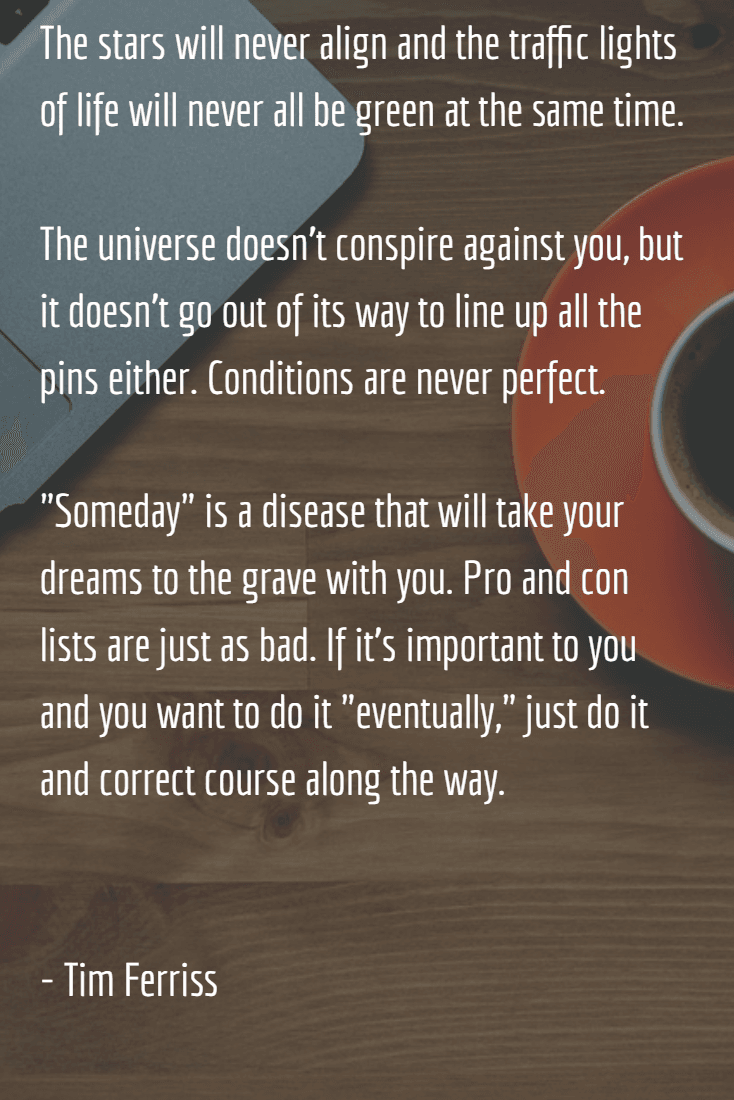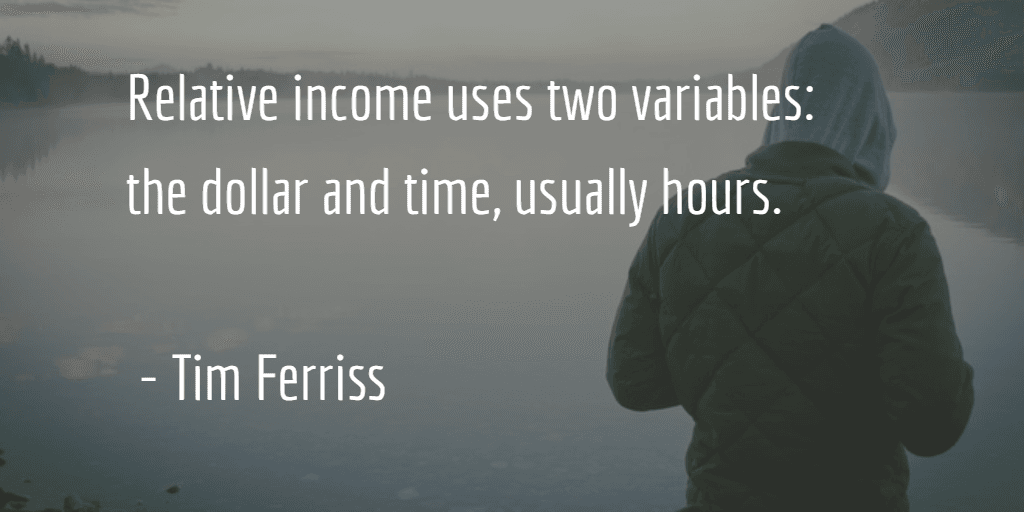5 Things Small eCommerce Entrepreneurs can Learn from Tim Ferriss
How to apply advice from a well-known author, investor and speaker to your own eCommerce business? Here are some real-life tips you can do today to make your business (and life) more holistic and fulfilling.
I suppose you know who Tim Ferriss is. Despite the fact that today the world is experiencing a second massive wave of inspirational books on business, motivation, time management and entrepreneurship, despite significant criticism towards such kind of literature, Tim is mostly loved and respected by the crowds. The reason is simple: his methods can work. Or, if to be precise, they work for a bigger percentage of people than we could expect from a business-and-life book.
Another reason is that his advice can be applied to virtually any sphere of life or business. Some of the things he’s saying in his book, The 4-Hour Workweek, are illustrated by examples from his own life, and at this point they stop sounding too general or illusive.
Today we’ll go through some ideas ofThe 4-Hour Workweek and see how these tips can be used to reinvent your small e-commerce business.
The Timing is Never Right
Tim insists you should do things as soon as the idea and desire to do this come to you. The issue of ‘someday’ is tricky; sometimes the reasons not to do it today may even sound reasonable.
The thing is, reality doesn’t offer ideal circumstances to us, and if they look or seem ideal at some point, it doesn’t mean they actually are. We just don’t see or understand the big picture or details.
And when you come to a point that no time is ideal for doing something, you see that doing it now is a brilliant idea.
Pro tip for eCommerce
If you want to implement a new business process, to start selling some new products, to run an experimental promotion, to change the website layout, whatever, do it now.
Here are the common false-reasonable excuses that may come up in your head, busted:
- You don’t have enough employees right now. (Guess what? You never will. )
- You don’t have an employee with proper skills. (Good. Time to learn on the road)
- It costs money. (Oh, that one sounds extremely reasonable. The whole idea of implementing new things for your shop is that each one of them should bring you money back.)
- It’s low season (Friday evening, post-Christmas lethargy, Super Bowl, your granny’s b-day. If people don’t buy from you right now, it’s not because of the low season. Successful online shops have customers 24 hours a day, 365 days a year)
- You didn’t see any of your competitors placing ads on Instagram. (Be the first then.)
There won’t be any better time for A/B testing your product page, finally adjusting your shipping rates or implementing a loyalty program. Now is the perfect time.
Cash Flow First, Big Payday Second
The philosophy is quite simple; it implies a double aim.
Your store must bring you money every day so you could pay all the expenses and taxes and get your profit as well.
Secondly, you should think about a bigger aim, something more than just enough daily cash flow. This big payday could be anything: selling your store and getting money, being acquired, certain burst in sales and revenue, becoming famous via a viral effect, and anything you actually want for your business.
And to achieve the double aim, your efforts should flow in two directions.
Pro tip for eCommerce
- Make up your mind about what your bigger success is. Say, you want to run a big campaign, publishing several success stories on huge sites, and that will multiply your traffic and sales as well as brand awareness. To do this, you need money for publishing those stories plus more money to hire more staff so the store will be able to manage the load. Count the approximate total you’ll spend on this campaign.
- Saving all of your regular daily profit for this thing would be unwise. Divide this sum into portions. Say, your whole campaign will need $5000 in the first stage. Save $500 a week, which will take 10 weeks to have the total sum.
- To avoid deducting those $500 from your weekly cash earnings, think of ways you can earn additional $500 a week. It could be a series of promotions, growth hacking, expanding content marketing, or any other strategies which don’t require direct cash injections.
Relative Income is More Important than Absolute Income
And when it comes to time, everybody has 24 hours a day, and the payoff vary from what you’re doing with this limited resource.
But the dollar can cost a whole difference. Its price depends on currency rates, living costs, the money you have and the amount of money flowing around you (other businesses and people and economy in general).
Pro tip for eCommerce
You’ve probably read those amazing stories on how this or that e-commerce startup earned 3M in a year (quarter, month, whatever). And this is complete nonsense to apply those numbers to your business. The revenue should be always counted in with a number of other parameters, such as: the money that were invested, the number of people actually getting the final earnings, the cost of living and having business in the area, etc.
Tim talks a lot about living in less expensive areas. The same can be applied to e-commerce business with great success, and this is what big companies are doing, hiring people all over the world. A small business can do this, too!
- Find cheaper alternatives to smaller expendable materials, such as packaging, labels, cards, gifts and such
- Find where you can hire cheaper employees. It doesn’t mean that you’re excessively cutting costs and slowly turning into Scrooge McDuck. Giving jobs in cheaper countries or areas is also a great way to give people a chance for better life, skills and opportunities, and to improve global or local economy.
- If local laws and taxes are bothering you and causing money troubles, relocating it to a more comfortable area can be a good decision.
- Outsource your personal tasks to make space for more important decisions and analysis, and Tim describes how to do it in his book, so we won’t stop for too long on this point. In addition, outsourcing tasks improves your management skills!
Beating the Game, not Playing the Game
E-commerce business implies online marketing, which changes and grows rapidly. Successful strategies are shared and then accepted as common in a couple of months, if not weeks.
It’s good if you are aware of the main tendencies, best methods and new ideas in this field, but the problem is: your competitors do it exactly the same, reading the same e-commerce blogs and applying the same strategies.
And if you feel like you can’t offer more than others, it’s time to forget about the rules and try something new.
Pro eCommerce tip
Invent your own ways, be it customer care, sales, marketing, partnership, business processes or packaging.
Of course, nobody will tell you if this going to work, and the only way to find out is to experiment (and yes, it requires time and effort, and sometimes money).
But investing into something nobody does can bring you more than everybody gets.
Buffer’s radical transparency has been accepted as a controversial idea a couple at first. Look at where they are now. Of course, their success is not just about publishing salaries, but this brand feature played a huge role in their market establishment.
Collect your ideas and start trying them today. Some will work, some won’t, but this is the only way to achieve new heights.
You can have success with short blog posts (despite the fact that people love longreads), radical customer care policies (Warby Parker’s home try-on with prepaid return labels sounds like a waste of money to many of my friends who work in retail), site design that doesn’t look like the most stores in your niche, with experiments for your AdWords campaign that will make a typical PPC specialist turn grey – and when it works, it doesn’t matter.
To cut the long story short, each great thing was someday invented and done for the first time, and by being the inventor, you are going to take the cream while you’re the first and single one to do it.
As Tim says, different is better when it is more effective or more fun.
Pareto and Parkinson Laws are Real
The Pareto principle states that roughly 80% of the effects come from 20% of the causes.
Parkinson's law says that work expands so as to fill the time available for its completion.
It sounds too simple at first, but the reason why it’s repeated so often is that people are afraid of letting things go.
Reducing activities that aren’t effective or are not sufficiently effective is OK. You don’t have to run an Instagram account for your shop just because you were told to do so by a marketing guru. Banners aren’t working for you? Drop it. Yes, you’ve spent time and effort to work on them, but now it’s time to stop, or you’ll lose even more.
Pro eCommerce tip
- Set fixed time periods for completing tasks both for yourself and for your employees. Being a perfectionist is an honorable thing, but sometimes you have to stop and to focus on doing the most within a limited period of time. This skill is much more useful if compared to a skill of perfecting something to death, provided that we still (what a shame) have only 24 hours a day.
- Regularly overlook your activities and drop the least effective ones, transferring the time and resources to the activities that are the most effective right now.
- In confusing situations, do your math. Say, you’re not satisfied with the resources/outcome balance for your PPC campaign. Should you drop it? You can invest in educating your PPC specialist so he fine-tunes your campaign. What are the estimated improvements, expressed in the form of money?Or you can drop it and invest these time and resources into email campaigns, which are currently the most effective for your business. Again, make assumptions on what the result will be. Now, compare the two results and make a decision.
To wrap this up, I would like to say that many of you can feel insecure to step outside the comfort zone. As any other business, e-commerce is never a comfort zone. But Tim has a good point:
“If you are insecure, guess what? The rest of the world is, too. Do not overestimate the competition and underestimate yourself. You are better than you think.”
Get more to your email
Subscribe to our newsletter and access exclusive content and offers available only to MonsterPost subscribers.







Leave a Reply
You must be logged in to post a comment.